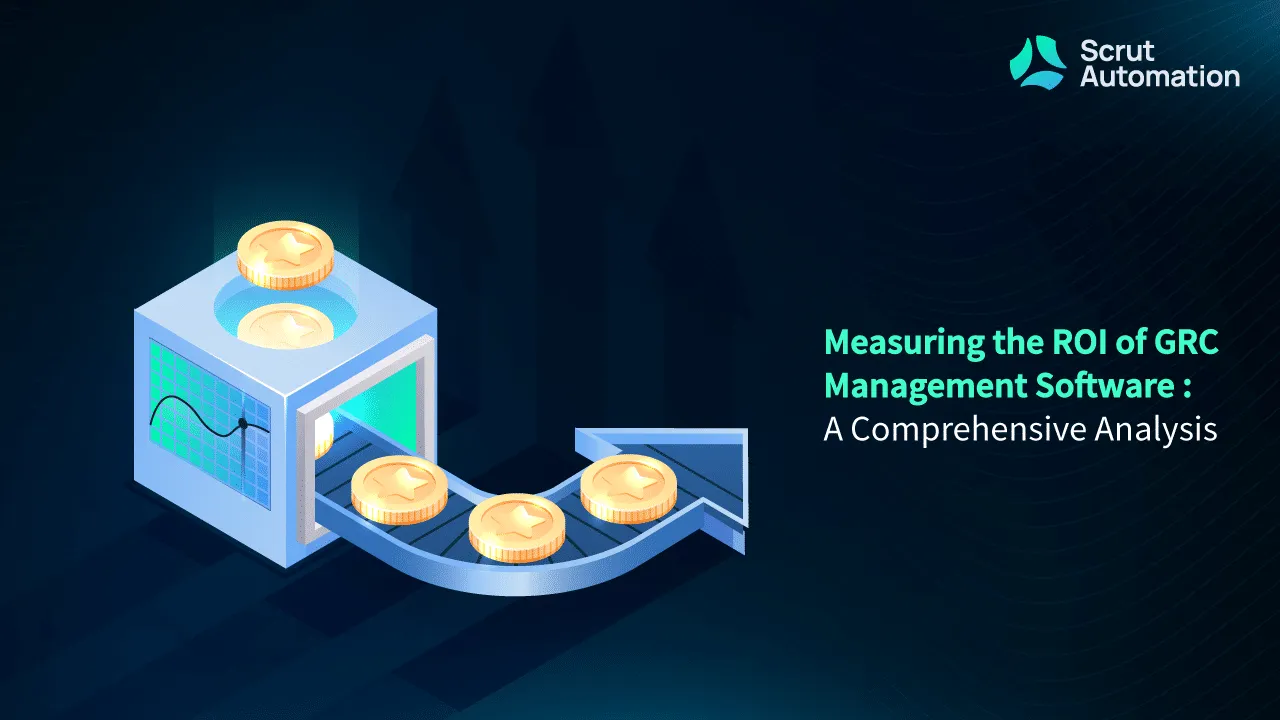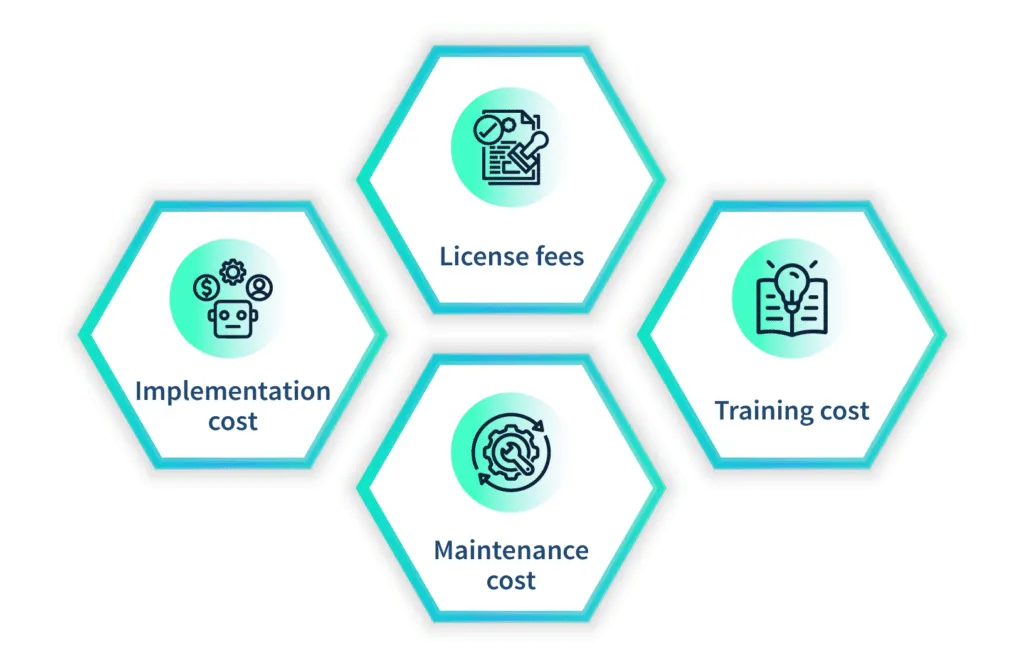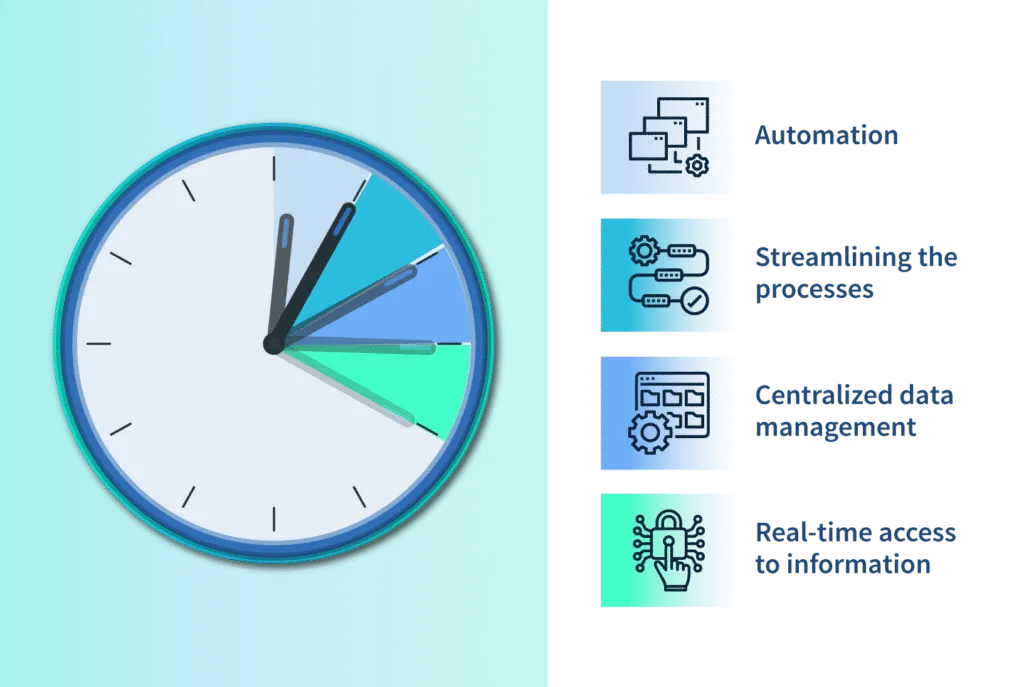GRC Management Platforms: How to Evaluate ROI and Maximize Your Investment

Businesses today have the responsibility of protecting the data of their stakeholders and protecting themselves from cyberattacks. One of the most effective ways to achieve this is to strengthen their GRC posture.
Governance, risk management, and compliance, or GRC, is increasingly becoming unavoidable for a business organization. And as usual, technology in the form of automation has come to the rescue. GRC platforms are the automated way to design and implement GRC programs.
GRC management platforms, also called GRC platforms, or GRC software, or GRC tools, are automated software designed to form and implement policies, identify and mitigate risks, and fulfill the compliance requirements of an organization.
The GRC platform can help an organization reduce manual tasks and improve efficiency. It also improves the compliance posture of the organization, that in turn can reduce the fines and penalties for non-compliance. But GRC platforms are not free. They cost money. Hence, it is quite natural to ask if it is worth investing in GRC platforms.
To answer the question of whether investing in a particular asset, physical or digital, is worth its costs, financial wizards have come up with the calculation of return on investment (ROI). ROI compares the financial benefits of an investment with its cost. Higher ROI means the benefits of the asset outweigh its costs. On the contrary, a negative ROI indicates the benefits are not enough to cover its cost.
Let’s first understand exactly what an ROI analysis is like.
Understanding ROI analysis
ROI analysis is a method used to evaluate the financial performance of a project, asset, or business to the cost of investment. ROI is usually expressed as a percentage of the initial investment. It takes into account the cost of assets and their benefits – both short-term and long-term. The benefits of calculating ROI are shown below.
- Determining whether the investment is worthwhile. A higher percentage of ROI indicates a higher return on investment.
- Identifying the most profitable investment. You can compare the ROIs of two or more products to calculate which one is worth your investment.
- Evaluating the success of an investment. After an organization has invested in a platform, it needs to evaluate whether it is worth investing in. It helps the organization in its future endeavors.
ROI is calculated by dividing the financial return by the initial investment cost.

Where,
ROI = Return on investment
Financial returns = All the benefits the investment is expected to generate, including increased productivity, reduced costs, increased revenue, and other financial benefits. Non-financial benefits such as improved customer satisfaction or employee morale should also be considered.
Initial investment cost = All the costs associated with the investment, including the cost of hardware, software, labor, training, and any other related expenses.
Now that we know what ROI is, let’s look at how to analyze ROI for GRC platforms.
ROI analysis for GRC management platforms
ROI analysis of various GRC platforms helps an organization to know whether it needs a GRC platform, whether the platform is a good investment, and which platform gives the highest benefits vis-a-vis its costs. An organization can know the worth of a GRC platform by conducting its cost-benefit analysis.
So, what are the key factors that impact the ROI analysis for the GRC platform?
Cost of implementing GRC management software
The cost of the GRC management platform depends on various factors, such as the size of the organization, the complexity of the compliance requirements, the number of users, and the features and capabilities of the platform itself.
While calculating the ROI of a GRC platform, all the costs associated with it should be considered. Some of the costs of the GRC platform are shown below.

- License fees
The license fee is the basic cost of the GRC platform. The platform vendor can charge a one-time fee or a yearly or monthly subscription for the platform. It may also vary depending on the subscribed features of the platform.
- Implementation cost
The implementation cost includes all the costs associated with configuring and setting up the platform in the organizational structure. These costs include costs for project management, consulting, data migration, customization, and integration with other systems.
- Training costs
The employees and the stakeholders need training for the successful implementation of the GRC platform, and it costs time and effort for the organization. Sometimes this training is conducted in-house, and other times the vendor or a third party conducts such training. No matter who conducts the training, the organization incurs expenses that should be included in the calculation of ROI.
- Maintenance costs
Maintenance costs of the GRC platform are included in this heading for the calculation of ROI. Maintenance costs include the cost incurred for maintaining and upgrading the GRC software to ensure that it meets all the current requirements for compliance.
The total cost of a GRC platform is then compared to the benefits provided by the GRC platform. A lower cost and higher benefits can result in positive ROI, indicating the financial worthiness of the platform. Below are some of the benefits of implementing a GRC platform.
Benefits of implementing a GRC platform
Save time by using GRC management software
When people say “time is money,” they are not wrong. Time, especially in a business organization, is as important as money. By implementing GRC management software, an organization can save time in various possible ways.

- Automated tasks
A GRC management platform can automate many tasks, including compliance monitoring, risk assessment, evidence collection for audits, and reporting. Automating the tasks can not only save time but also increase efficiency and reduce errors.
- Streamlining the processes
A GRC platform can streamline all the processes related to compliance, risk management, and governance. This allows employees to focus on other profit-generating activities rather than spending time and energy on mundane, repetitive tasks.
- Centralized data management
One of the major challenges for organizations is to retrieve data when required. A GRC platform helps the organization centralize the data for easy retrieval. It becomes easier and faster to gather audit artifacts and evidence. Plus, the management can have more visibility over data. The organization can save precious time by accessing any data needed.
- Real-time access to information
The real-time access to information reduces the time required to detect, identify, and respond to threats arising in the organization. It can improve the cybersecurity as well as compliance posture of the organization.
The time saved from all the above ways can ultimately increase the output of the organization, reduce labor costs, and impact the ROI of the GRC platform positively.
Reduction in compliance costs

A GRC platform automates compliance tasks, enabling an organization to save time and labor. The organization can reduce the workforce working on compliance procedures, saving numerous hours spent on these tasks.
Moreover, when the tasks are automated, the chances of errors reduce dramatically. Errors often prove costly for compliance in the organization. A GRC platform can reduce the cost of errors significantly.
Most importantly, a GRC platform can save tons of money and time in case of a data breach. Typically, compliance can help prevent data breaches, but if the organization is unfortunate enough to face a data breach, it can prove to the legal authorities that it did its best to prevent it. This way, the penalties and fines can be controlled.
While calculating the cost of compliance, the organization must consider all the costs it will incur if it doesn’t invest in a GRC management system.
Reduction in legal costs
An organization can face legal charges if it faces data breaches. Regulations like GDPR and HIPAA have serious legal implications. Typically, the organization might have to bear legal costs plus penalties and fines as a result of a data breach. With a robust GRC platform, the organization can reduce the chances of data breaches; thus, the legal expenses, as well as penal expenses, can be saved.
Calculation of ROI for GRC management software
The ROI for a GRC management platform can be calculated using the figures calculated above.
Let’s understand how to calculate the ROI of the GRC platform with an example of a fictional company called XYZ Ltd.
Let’s assume XYZ Ltd. has invested $200,000 in a GRC platform to manage its compliance requirements and mitigate risks. They expect that the GRC platform will help them achieve the following benefits over the next year:
Reduced legal costs: $100,000
Increased efficiency: $50,000
Reduced risk of fines/penalties: $25,000
Avoided reputational damage: $75,000
To calculate the ROI for the GRC platform, we need to first determine the net benefits. This is the total benefit minus the cost of the investment. In this case, the net benefits would be:
Net Benefits = $100,000 + $50,000 + $25,000 + $75,000 – $200,000
Net Benefits = $50,000
Next, we calculate the ROI by dividing the net benefits by the cost of the investment:
ROI = Net Benefits / Cost of Investment x 100%
ROI = $50,000 / $200,000 x 100%
ROI = 25%
Therefore, the ROI for the GRC platform investment is 25%. This means that for every dollar invested in the GRC platform, XYZ Ltd. can expect to receive $0.25 in net benefits.
Well, you should note that the circumstances for each organization are different for the calculation of ROI for their GRC platforms. Some of the benefits that an organization gets from a GRC platform might not be mentioned above, as they are specific to that organization. These organizations must consider all the benefits and costs associated with the GRC management software to get a fair idea of the ROI.
Best practices for implementing a GRC management software
Proper implementation of GRC management software is crucial for its success and effectiveness. A GRC platform should be implemented in alignment with the organization’s business goals. A proper GRC platform doesn’t work in a vacuum but in sync with the overall business activities of the organization.
A well-implemented GRC platform can increase the efficiency of the organization by streamlining processes, reducing human effort, and automating routine tasks. The platform should be able to integrate with other applications and software used by the organization for other tasks.
A GRC platform can reduce cyber risks and make an organization compliant with various cybersecurity standards. It ensures that every process of the organization is monitored and defined to mitigate cyber threats.
An organization should consider some of the factors shown below for the successful implementation of the GRC management software.
Key considerations when implementing GRC management software

Even a powerful GRC management tool can fail if the implementation is not done properly in the organization. Here are some of the considerations to be taken into account when choosing and implementing the GRC platform.
- Choose the right platform for the implementation of GRC management. The right platform can give you the highest ROI, all the features you need, efficiency, scalability, and security for your organization.
- Define the organization’s business goals and objectives. Check if they align with its GRC objectives. If not, fine-tune the GRC objectives to sync with the business goals.
- Once you have implemented the GRC management software, you should establish the metrics you will use to measure its success.
- Ensure that all the users and stakeholders have sufficient knowledge about the platform and that they have adopted the platform in their daily lives.
In summary
To conclude, let us recount what we learned in this article. Return on investment or ROI is a measurement of how much net returns an organization generates by investing in a particular asset. When this asset is a GRC management software, the organization must consider the ROI of the product and compare it with other GRC platforms in the market.
The product with the highest ROI is not always the best option. The organization should also consider other factors, such as features, usability, ease of use, scalability, and effectiveness of the product, before finalizing the GRC platform. If the ROI is negative for a product, the organization should think twice about investing in it, as it can result in long-term loss.
FAQs
What is ROI analysis for GRC management software?
ROI analysis is a method of evaluating the financial return on investment of implementing GRC management software. It involves calculating the cost savings and revenue benefits that result from implementing the platform and comparing them to the cost of implementation. It is denoted in percentage.
Why is ROI analysis important for GRC management software?
ROI analysis helps organizations to determine the financial benefits of implementing GRC management software. This is important because it helps to justify the investment in the platform to key stakeholders, such as executives and investors.
What types of cost savings can be realized through the implementation of a GRC management platform?
Cost savings can be realized through a variety of mechanisms, including increased efficiency and productivity, reduced manual effort and errors, and avoidance of fines and penalties for non-compliance.


















